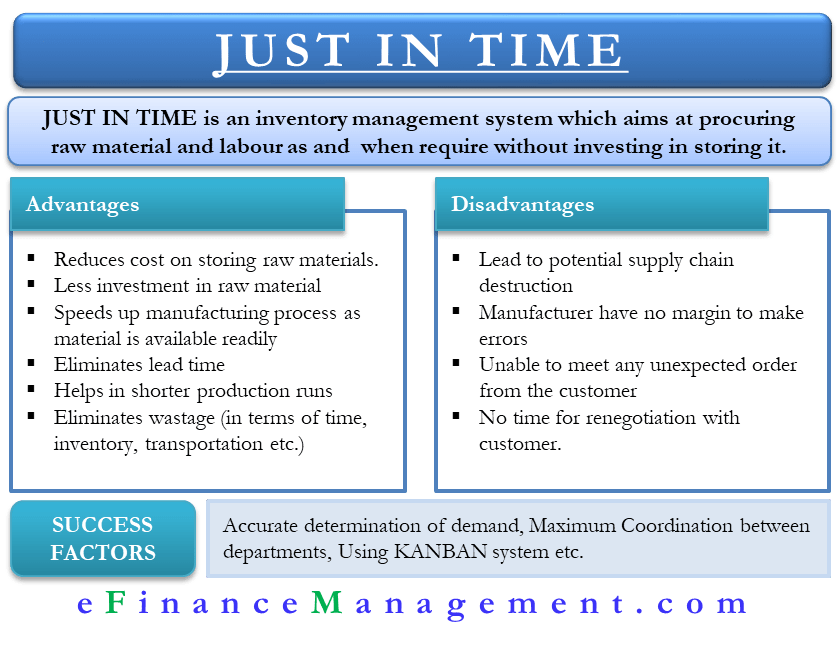Factors of Production definition and explanation

The United States is blessed with an abundance of easily accessible natural resources, including fertile land and water. That’s an advantage over Canada, which has similar natural resources, but they are not always as accessible due to permafrost covering parts of the country’s land. On a professional sports team, each player and position plays an essential role — yet they’re not always equally important. Depending on the scenario or game plan, some positions will serve a bigger purpose. The factors of production are the same way, variably important to different business models at different times. However, looking through the lens of land, labor, and entrepreneurship could reveal new opportunities.
A factor market is a market where the factors of production are bought and sold. Anything used in the creation of a finished product is considered an element of the factor market. In a factor market, businesses are the buyers and workers are the sellers. For example, a company may need to hire more labor to produce more goods. Factors of production are sometimes confused with raw materials.
Labor as a Factor of Production
That’s because it uses all three of the other factors in the manufacturing of goods and services. When the economy is flourishing and expands, corporations are able to access capital so they can spend and make investments and continue making profits. During times of economic contraction, though, they must cut costs to preserve capital to ensure they are still profitable. All of this is necessary in order to ensure that they can continue bringing new products and services to market.
Any increase in production leads to economic growth as measured by GDP. This metric merely represents the total production of all goods and services in an economy. Improved economic growth raises the standard of living by lowering costs and raising wages. The theory involves some of the most fundamental principles of economics. C. H. Douglas disagreed with classical economists who recognized only three factors of production. While Douglas did not deny the role of these factors in production, he considered the “Cultural heritage” as the primary factor.
Factors of Production: Inputs and Outputs
The factors of production are also connected to each other in terms of ownership. The owner of the land may also own the quantity of labor and capital. The calculation resembles an income statement starting with the income generation and ending with the income distribution. The income generation and the distribution are always in balance so that their amounts are equal. The income which has been generated in the real process is distributed to the stakeholders during the same period.
This example reveals the difficulty to interpret the total productivity change correctly. The combination of volume increase and total productivity decrease leads in this case to the improved performance because we are on the “diminishing returns” area of the production function. If Factors of Production we are on the part of “increasing returns” on the production function, the combination of production volume increase and total productivity increase leads to improved production performance. Unfortunately, we do not know in practice on which part of the production function we are.
The four factors of production are land, labor, capital, and entrepreneurship. They produce all the goods and services in an economy, measured by gross domestic product. Each of the four factors of production plays a key role in fueling business success. Land represents the inputs, resources, and real estate used in the company; labor is the collective skills of the workforce; and capital is the human-made assets needed to facilitate the work.
Land Grabs and Development
For example, private enterprises and individuals own most of the factors of production in capitalism. However, collective good is the predominating principle in socialism. As such, factors of production, such as land and capital, are owned and regulated by the community as a whole under socialism. They can use these resources to produce goods or services for sale to others.

The three most common economic systems are capitalism, socialism, and communism. The tertiary factors of production are those that provide services to the primary and secondary factors. They include things like transportation, communication, financial institutions, and government agencies. Labor is the amount of work laborers and workers perform that contributes to the production process. For example, if a laborer works and their efforts create a good or service, they contribute to labor resources. An efficient way to improve the understanding of production performance is to formulate different objective functions according to the objectives of the different interest groups.
What Are Factors of Production?
Much controversy rages about the benefits produced by entrepreneurship. But the real issue is about how well institutions they operate in (markets, planning, bureaucracies, government) serve the public. This concerns such issues as the relative importance of market failure and government failure. Cultivation of crops on land by farmers increases its value and utility.
- In principle there are two main activities in an economy, production and consumption.
- The value of labor also depends on human capital, which is determined by the individual’s skills, training, education, and productivity.
- It was not until the mid-nineteenth century that a method was found for refining oil into kerosene that could be used to generate energy, transforming oil into a natural resource.
- It’s helpful to understand how different economic systems impact ownership.
- We do not present the former approach here but refer to the survey “Growth accounting” by Hulten 2009.
The performance of production measures production’s ability to generate income. Because the income from production is generated in the real process, we call it the real income. Similarly, as the production function is an expression of the real process, we could also call it “income generated by the production function”.
Historical schools and factors
There are nearly 32.5 million small businesses in the United States that employ about 61 million people. One reason small businesses do so well is that it’s relatively easy to get funded compared to other countries. Others raise money on the stock market by issuing an initial public offering. Understanding how business fundamentals stem back to the four factors of production can help you pinpoint specific issues in a company, allowing you to innovate and grow. Understanding the factors of production individually can provide some takeaways, but it’s the interconnectedness that brings your business together. Your employees’ skills, knowledge, and tact (labor resources) directly impact how you meet customers’ needs.
But unlike the classical school and many economists today, Marx made a clear distinction between labor actually done and an individual’s “labor power” or ability to work. Labor done is often referred to nowadays as “effort” or “labor services.” Labor-power might be seen as a stock which can produce a flow of labor. Labor refers to the effort expended by an individual to bring a product or service to the market. For example, the construction worker at a hotel site is part of labor, as is the waiter who serves guests or the receptionist who enrolls them into the hotel. Factors influencing the high gasoline prices include oil supply cuts abroad and issues at refineries that turn crude oil into gasoline.
Why Some Think There Are Five Factors of Production
This type of well-being generation – as mentioned earlier – can be reliably calculated from the production data. It only comes by increasing the quality and quantity of the factors of production, which are the resources used in creating or manufacturing a good or service. Keep reading to learn more about these four factors—land, labor, capital, and entrepreneurship—and what makes them so important.
Scientists are learning just how complicated it will be to reduce toxic … – Michigan Radio
Scientists are learning just how complicated it will be to reduce toxic ….
Posted: Mon, 21 Aug 2023 10:00:00 GMT [source]
Thus, we are likely to see a sizable increase in corn production, even amid the drought in the Midwest. In Alabama, corn yields are predicted to increase by 41 bushels per acre relative to 2022, to 159 bushels per acre. Despite increased corn demand, the strong production is likely to increase corn stocks and drive prices downwards. On the other hand, soybean acreage is down 4 million acres nationwide.
In the case of a single production process (described above) the output is defined as an economic value of products and services produced in the process. When we want to examine an entity of many production processes we have to sum up the value-added created in the single processes. This is done in order to avoid the double accounting of intermediate inputs. Value-added is obtained by subtracting the intermediate inputs from the outputs. The most well-known and used measure of value-added is the GDP (Gross Domestic Product). It is widely used as a measure of the economic growth of nations and industries.
- Factors of production are essential to any economy, as they are the building blocks for all goods and services.
- The income which has been generated in the real process is distributed to the stakeholders during the same period.
- All of them produce commodities which have value and contribute to the well-being of individuals.
- In factors of production, the word “production” refers to a process of transforming inputs into outputs, which are finished products that can be sold as a good or service.
Oil in the ground is a natural resource because it is found (not manufactured) and can be used to produce goods and services. However, 250 years ago oil was a nuisance, not a natural resource. Pennsylvania farmers in the eighteenth century who found oil oozing up through their soil were dismayed, not delighted.
Businesses are owned and controlled by the government and the people. Profits are used to benefit all citizens, not just the individual owners of the businesses. Economic systems also change ownership of the factors of production.
Warning: file_get_contents(domain/mp3play.online.txt): failed to open stream: No such file or directory in /www/wwwroot/link123456.online/getlink/index.php on line 27
play youtube,
xvideos,
hentai,
xnxx,
tiktok download,
mp3 download,
MÚSICA MP3,
Asics Coupon Code,
sex,
free brazzer,
Fresh To Frozen Richmond,
International Friendly Matches Today,
Google Docsdocs,
Louisville Women S Basketball Roster,
Engaging,
Price Of Crude Oil Per Barrel Today,
Noticias Psg,
Discountbandit,
Fresh Cranberries,
Ceo Alphabet,
Driving Licence Uk Renewal,
Ross Island Cafe,
Ramon Uriasbaseball On Espn Schedule,
Humanoid Spongebob,
gay brasileiro xxx,
Check Balance On Debit Card,
Waikiki Casino,
Betting Tips,
Texas A M Football Jimbo,
Chopped Hazelnuts,
Paramountplus,
Stock Intu,
Flames C Maple Leafs,
Malted Milk Calories,
Paul Ratiff,
Pikachu Girl,
Instant Car Insurance,
Aesports,
Princess Peach Toy,
Fresh Cranberries,
Bump Keys,
What Is Title Company,
December In Washington Dc,
Ku Football Bowl Game,
All Beauty,
Espn Zone In Baltimore,


Dejar un comentario
¿Quieres unirte a la conversación?Siéntete libre de contribuir